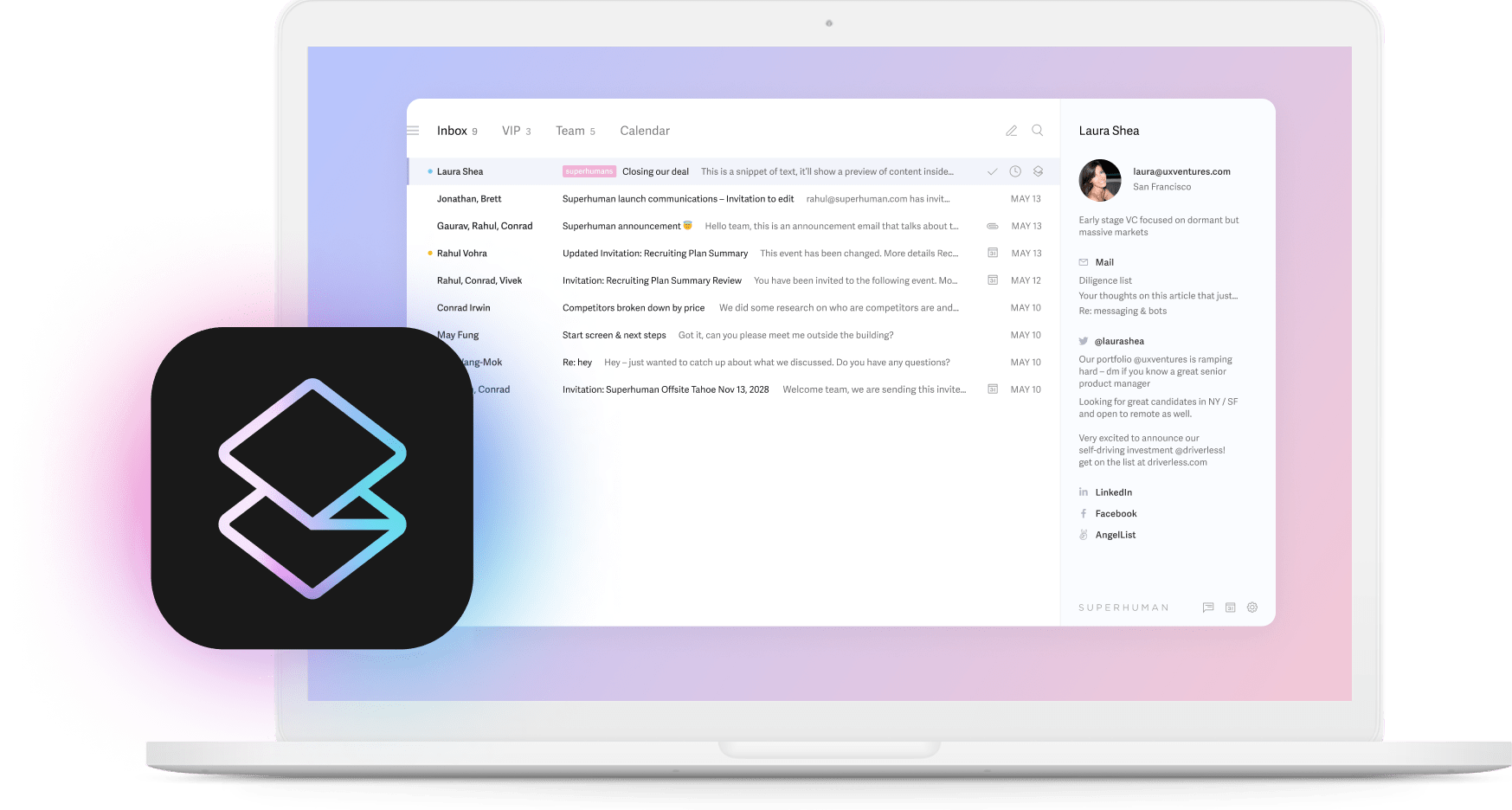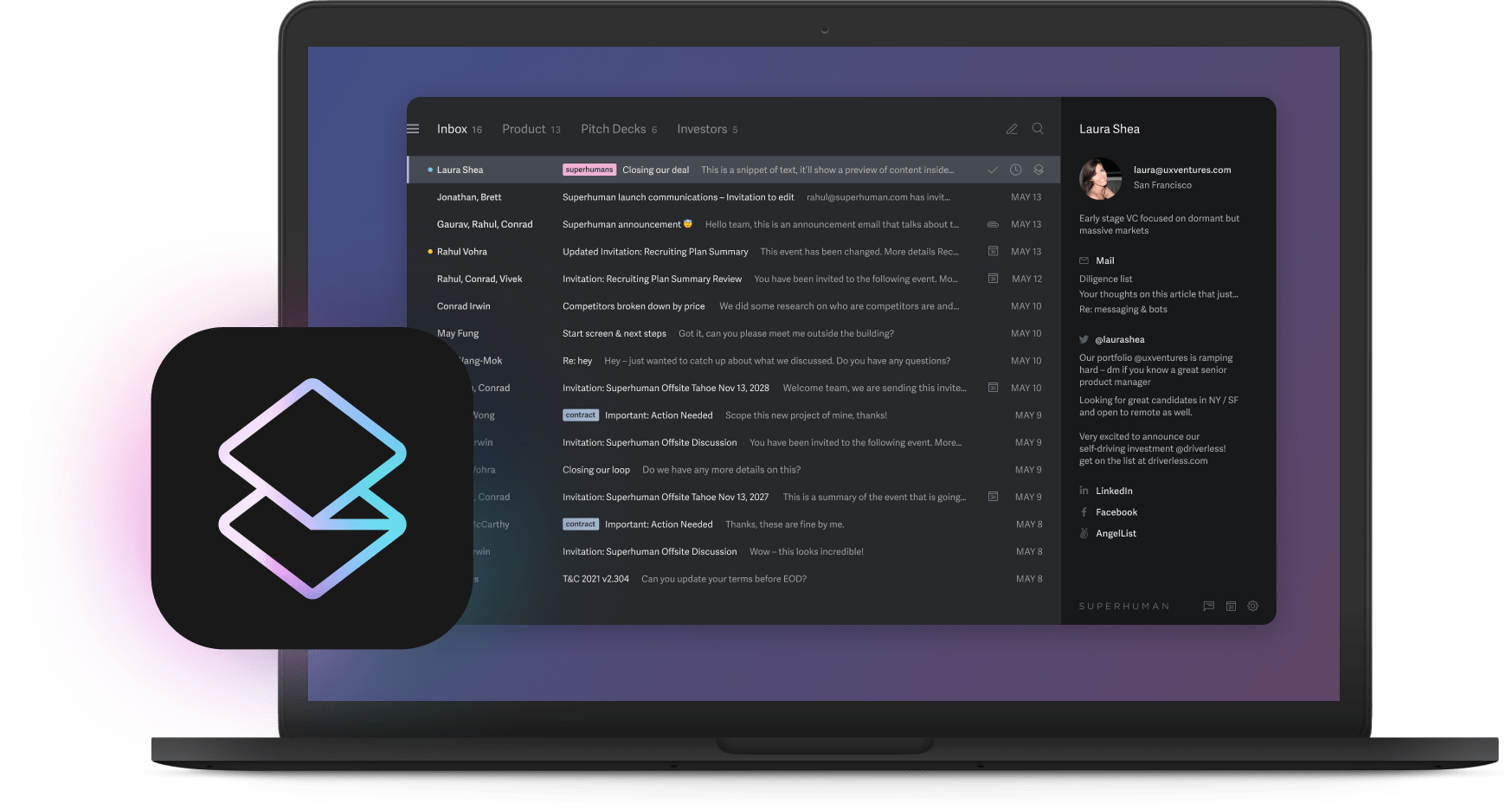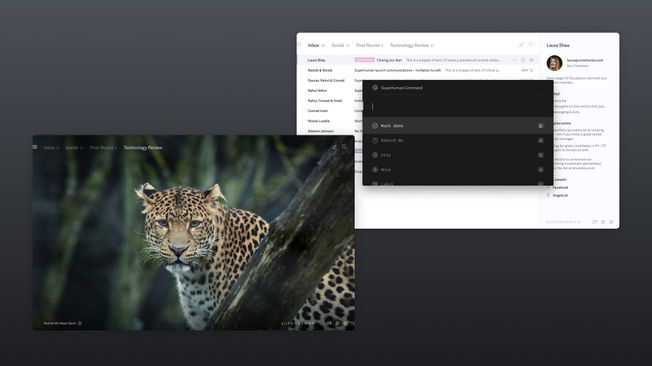
You're drowning in investor updates, hiring sprints, and endless email threads. The typical advice feels like a false choice. Hire an assistant or automate everything. But successful leaders know better.
Between 47% and 56% of white-collar work can already be handled by AI systems that never call in sick. Meanwhile, Superhuman helps teams save 15 million hours every single year just on email alone. The real question isn't whether to choose humans or bots. You need to know which tasks belong where.
Assistants shine when relationships and fast-changing context matter most. Automation works when workflows repeat predictably. The sweet spot comes from a decision matrix that scores every task by complexity and strategic impact, then tells you exactly what to automate, delegate, keep, or kill.
This framework gives you that system. You'll get a two-minute decision matrix, deeper scoring criteria, real ROI calculations, and the hidden costs everyone ignores. You'll see how smart leaders blend AI tools with human judgment to fly through their inbox, reclaim hours, and keep momentum during crunch time.
The 2-minute verdict: instant decision matrix
You have two minutes, a crowded to-do list, and a looming board call. Should you spin up a Zapier flow or ping your assistant? Plot any task on two axes. Strategic impact and task complexity. Where it lands tells you what to do next.
Automate low-complexity, low-impact work. Delegate high-complexity, low-impact work. Personally handle high-impact, high-complexity work with selective AI support. Eliminate or batch anything that scores low on both dimensions.
Inbox triage, calendar juggling, and expense entry make up the bulk of that automatable slice. The remaining tasks need the nuance only humans bring. Relationship emails, sensitive negotiations, creative problem-solving.
Speed matters here. Superhuman customers process email twice as fast, respond 12 hours sooner, and save four hours each week. That extra time lets you review the tasks still in the "own it" quadrant while your automations and assistant handle the rest.
Step-by-step decision framework
You only need five quick questions to know whether you should automate, delegate, or keep a task on your desk. Score each question from 0 (negligible) to 5 (mission-critical), average the results, and you have a data point rather than a hunch.
Average ≤ 1 means automate.
Average > 1 and ≤ 3 means delegate or run a hybrid.
Average > 3 means keep in-house.
1. Strategic sensitivity
If revenue, runway, or reputation suffers when this slips, score it high. McKinsey finds that 47 to 56 percent of white-collar work could potentially be automated, with routine tasks most affected while strategic communications remain human-led.
2. Variability
How often does the workflow change? Automation loves predictability. Stable processes get handled by no-code bots first. Give a 0 for repeatable routines, a 5 for ever-evolving projects.
3. Frequency
High-frequency tasks like inbox triage create the biggest payoff when automated. Score a 5 for daily, 0 for occasional.
4. Latency tolerance
If a one-day delay barely matters, the task is ready for a bot that runs overnight. Time-sensitive work like customer escalations needs human oversight.
5. Risk of silent failure
Automated flows hit 99.5% accuracy, yet an error can spread across every record before you notice. High-risk tasks affecting compliance or investor relations deserve human eyes.
Weekly expense reconciliation scores low on revenue impact (1), rarely changes (0), happens every Friday (4), can slip a day (1), and silent failure only muddles internal reports (1). Average comes to 1.4. That falls into delegate or hybrid territory.
ROI beyond cost-per-hour
Hourly rates feel objective, yet they hide the real economics. A smarter view weighs every dollar against the full life cycle of a task.
Total ROI = (Time Redeemed × Weighted Hourly Value) − (Direct Cost + Switching Cost + Oversight Cost)
A CEO who values time at $300 per hour outsources 8 hours of admin monthly to a VA charging $40 per hour. Time Redeemed equals $2,400. Direct Cost runs $320. Switching Cost comes to $500 monthly (onboarding amortized). Oversight takes $600 (2 hours monthly). Total monthly ROI reaches $980.
Same CEO invests $5,000 to build an automated workflow with $200 monthly upkeep. Time Redeemed stays $2,400. Direct Cost totals $408 (maintenance plus amortized build). Monthly ROI after break-even hits $1,992.
The automation wins on pure math, but this misses cognitive benefits that compound your advantage. When you're calculating true ROI, you need to factor in how solutions affect your mental bandwidth. Most email clients force you to mentally sort through everything, but Superhuman's Split Inbox automatically organizes emails by importance, something Gmail and Outlook don't offer. You process twice as many emails in the same time without mental switching costs. Similarly, while other email apps make you read through entire email threads, Superhuman's Auto Summarize instantly condenses long conversations into key points. These aren't just features, they're cognitive load reducers that deliver immediate ROI through reduced mental overhead, not just saved minutes.
The hidden costs of over-automation
When you automate everything, you trade visible savings for hidden risks that explode when pressure peaks. 87% believe AI at work is necessary for competitive advantage, yet rushing creates vulnerabilities.
Brittle workflows hit first. Picture a twelve-step Zapier chain that pulls investor data and formats slides. Five minutes before your board meeting, the API key expires. That single glitch wipes out hours you thought you saved.
Shadow-IT sprawl comes next. Teams bolt new tools onto legacy stacks. 55% of banks cite integration with legacy systems as their biggest hurdle. Enterprise integrations run $3,000 to $100,000 before counting maintenance.
Security risks grow quietly. Automated systems move customer data at machine speed, widening the blast radius of any breach. A single mis-mapped field propagates across every downstream ledger. Recovery costs dwarf the savings that tempted you to automate.
Over-automation erodes adaptability. When core tasks become fully automated, human judgment atrophies. The moment a novel edge case appears, no one remembers the manual workaround.
Myths & realities of hiring an assistant
Busy leaders often hesitate to bring on an assistant because of three persistent myths that make the decision seem riskier than it is.
Myth 1: "Humans don't scale."
Assistants bring judgment. Modern assistants work alongside AI, jumping in when situations need discretion. McKinsey calls this hybrid approach superagency. Software handles repetitive work while your assistant applies insight where it matters.
Myth 2: "Assistants are glorified schedulers."
Recent audits show assistants drafting investor decks, cleaning CRM data, tracking milestones, and curating market research. Virtual agencies list responsibilities from bookkeeping to marketing operations.
Myth 3: "Assistant management is straightforward."
Recruiting costs several thousand dollars. Onboarding eats 20 hours before an assistant becomes effective. Then plan 4 hours monthly for feedback and context sharing. Skip that investment and quality drops.
Recruiting stretches weeks. Onboarding demands documenting workflows and granting access. Ongoing oversight pulls from your attention during fundraising or launches.
Choose people for high-stakes relationships, like coordinating senior hire references. Pick humans for nuanced situations, like triaging investor questions beyond FAQs. Choose people for evolving processes where procedures change weekly.
Cognitive load: managing bots vs. managing people
Think of your brain like a bank account. Every minute spent managing draws from that account.
Managing a human assistant taps social and emotional circuits. You're clarifying tone, reading motivation, adjusting expectations. When instructions get misunderstood or priorities shift, it spikes stress. All of this uses the same mental energy you need for investor calls and product decisions.
Automation promises to eliminate that drain, but only when it works perfectly. The moment a workflow breaks, your cognitive load jumps from zero to crisis mode. Professionals spend more than 50% of their workday in email, messaging, and calendar, making the cognitive cost of managing these systems particularly significant.
These are different types of mental overhead. Switching between them destroys focus. Treat these transitions like billable hours. Batch your automation reviews, schedule assistant check-ins, stop bouncing between the two.
This is where having the right email infrastructure becomes critical. Superhuman cuts through this cognitive mess in ways traditional email clients can't. The keyboard-first interface responds in under 100ms, faster than Gmail or Outlook can even register a click. Split Inbox, unique to Superhuman, separates low-value updates from high-impact conversations automatically. You're not mentally sorting, you're just acting. Teams save 4 hours weekly and respond to twice as many emails because Superhuman eliminates the context switching that plagues standard email apps.
Real-world scenarios under growth pressure
Growth companies move fast or die. Industry-leading companies are 3x more likely to have experienced significant productivity gains from AI. Here's how to apply the decision matrix when everything's urgent.
Board pack assembly
Pulling metrics is low-complexity work. The narrative that frames those numbers is high-complexity territory. Automated tools collect data hourly. An assistant reviews anomalies and blends graphs. You spend fifteen minutes polishing the story. Data extraction scores low complexity, high impact, so automate it. Narrative scores high on both axes, so delegate with oversight.
Investor update emails
Every update needs to sound like you, but the structure repeats monthly. This is where Superhuman's Write with AI becomes invaluable. Unlike generic AI writing tools, it learns from your actual sent emails to match your tone perfectly. The AI drafts the first version in seconds, pulling from your communication style. An assistant checks numbers and flags sensitive disclosures. Your final read keeps the voice authentic. Draft creation sits in low-complexity, high-impact territory, so automate it. Compliance review is moderate complexity, high impact, so delegate it. Final approval is high complexity, high impact, so keep it.
Senior hiring funnel
A no-code workflow scrapes LinkedIn and enriches profiles. Your assistant sends personalized outreach and maintains white-glove communication. Assistants handling candidate nurturing raise reply rates by 30%. When evaluating candidates, most email tools leave you googling for context. Superhuman's Social Insights surfaces LinkedIn details about prospects directly in your inbox, a capability you won't find in Gmail or Outlook. You personalize outreach instantly without switching tabs.
Annual strategy off-site
System workflows reserve rooms and track spend. But keeping track of what needs follow-up becomes a nightmare in standard email. Superhuman's Auto Reminders automatically flag expiring holds and pending responses, something you'd have to manually track elsewhere. Your assistant negotiates venue perks and adapts to dietary needs. You focus on agenda design. Logistics belong in the automate quadrant. Stakeholder care lands firmly in delegate. Vision setting stays with you.
The pattern emerges across all scenarios. Automate repeatable data work, delegate nuanced communication, keep strategic calls in-house. Companies like Rilla combine human judgment with AI tools, using Superhuman to respond twice as fast while maintaining authentic communication.
Building the high-leverage hybrid stack
Start small, scale fast. This principle drives a hybrid stack that blends automation with human judgment.
Phase 1 begins with a task audit. List every recurring workflow, then automate the first 20 percent. No-code tools like Zapier and Make cost $10 to $50 monthly. 55 percent of banks cite legacy integration as their biggest hurdle, a warning for any growing company.
Phase 2 tackles communication overload. This is where you need more than just another email app. Add Superhuman and turn on Split Inbox, a feature that doesn't exist in traditional email clients. You triage email in seconds, archive hundreds of messages automatically, save 4 hours weekly. Layer in Loom and Notion. Expect $30 to $50 per seat.
Phase 3 brings in a tech-savvy assistant who works alongside your AI tools. Budget $3,000 for recruiting and onboarding, then $4,000 to $6,000 monthly. They polish investor updates drafted by Superhuman AI, arrange off-sites, or step in when a Zap misfires. The key is they're working with AI-native tools that actually reduce their workload, not just moving emails around.
Protect access across all phases. Limit API keys, rotate credentials, give assistants role-based logins. Review audit logs weekly.
Phase 1 runs $500 setup plus $50 to $100 monthly. Phase 2 adds $30 to $50 per seat. Phase 3 brings assistant salary plus tool spend. Even at the high end, the stack comes in below the $75,000 annual price of a fully manual approach.
Actionable checklist & next steps
Run a two-week task audit. For every recurring task, ask these questions. If this fails silently for 48 hours, what's the real cost? How much context does someone need? Does the process change monthly? How many times weekly does it hit your calendar? What happens if it delivers the wrong result?
Score each answer from 0 to 5. Average the scores and plug them into your decision matrix. Log every task, score it, label each item Automate, Delegate, Hybrid, or Eliminate.
By day 14, you'll have a data-backed roadmap showing where technical solutions cut costs and where assistants add value. Share findings with your executive team before setting next quarter's budget.
Start small and build momentum. Take the 14-day challenge, act on the results, revisit your scores every quarter. Strategic flexibility comes from knowing when to let systems run and when to put humans in the loop. Your future self will thank you.





